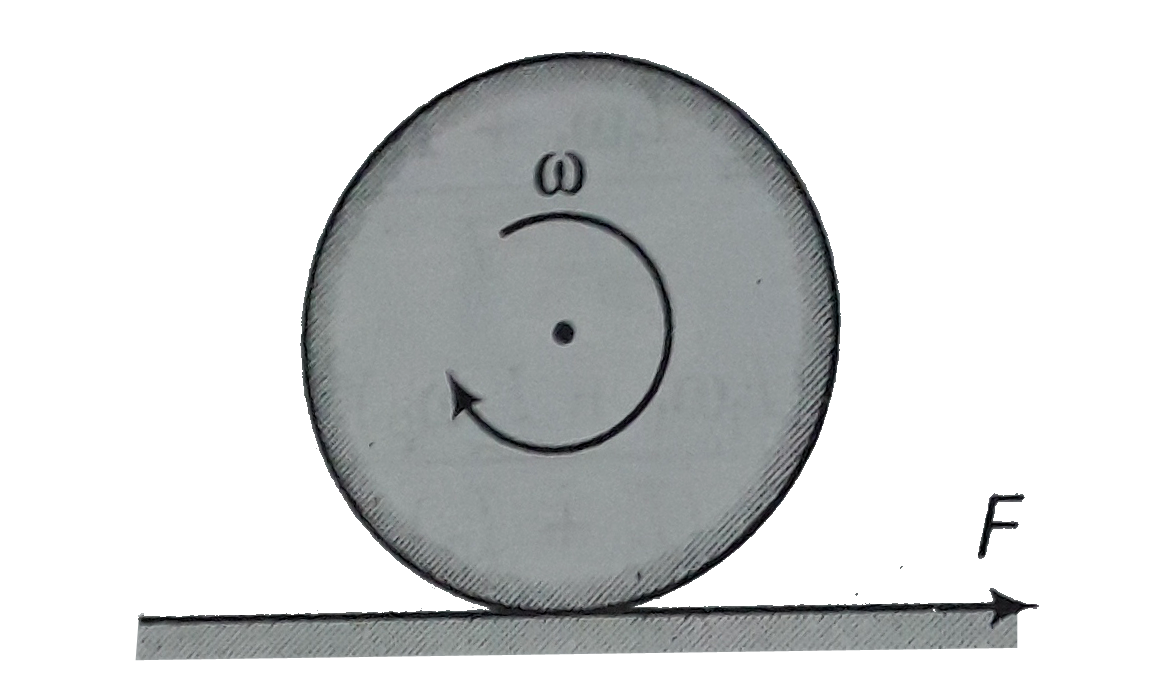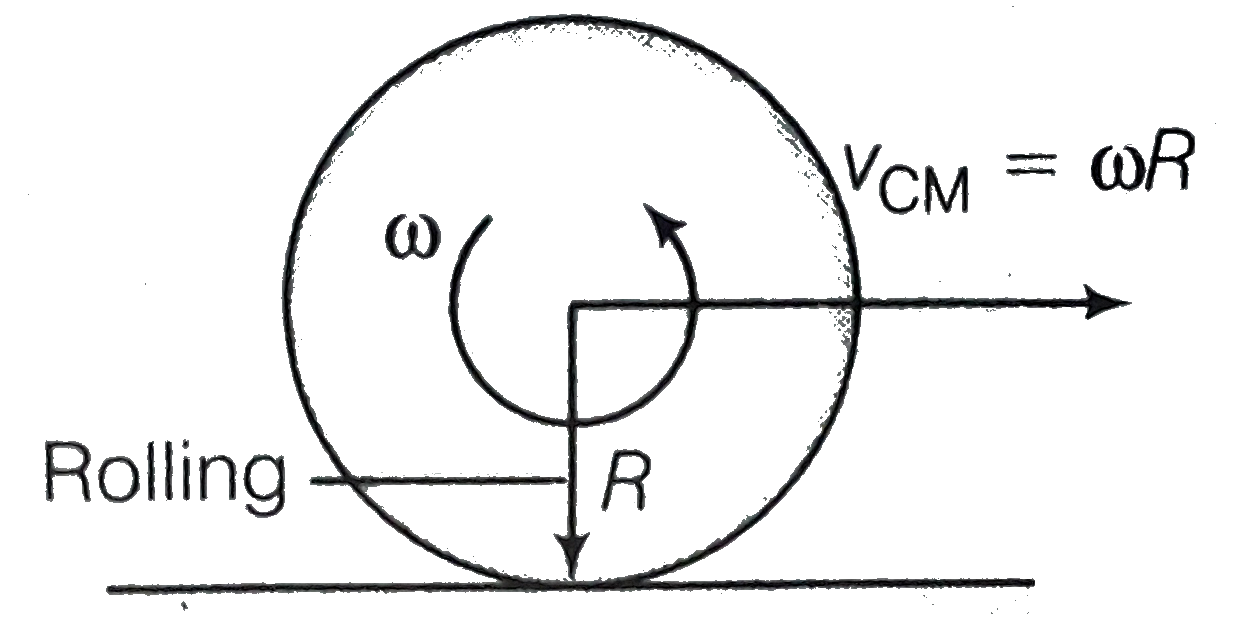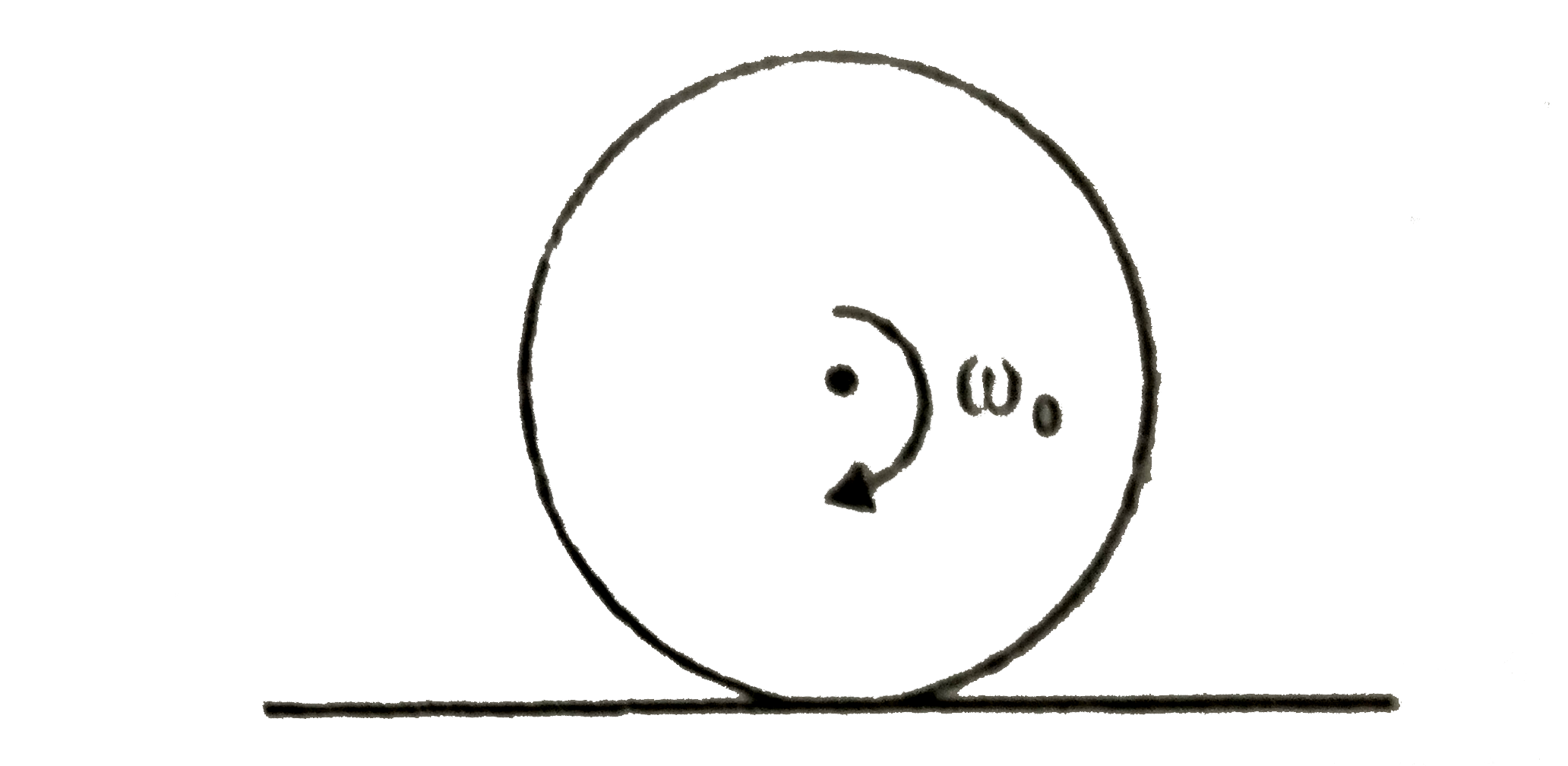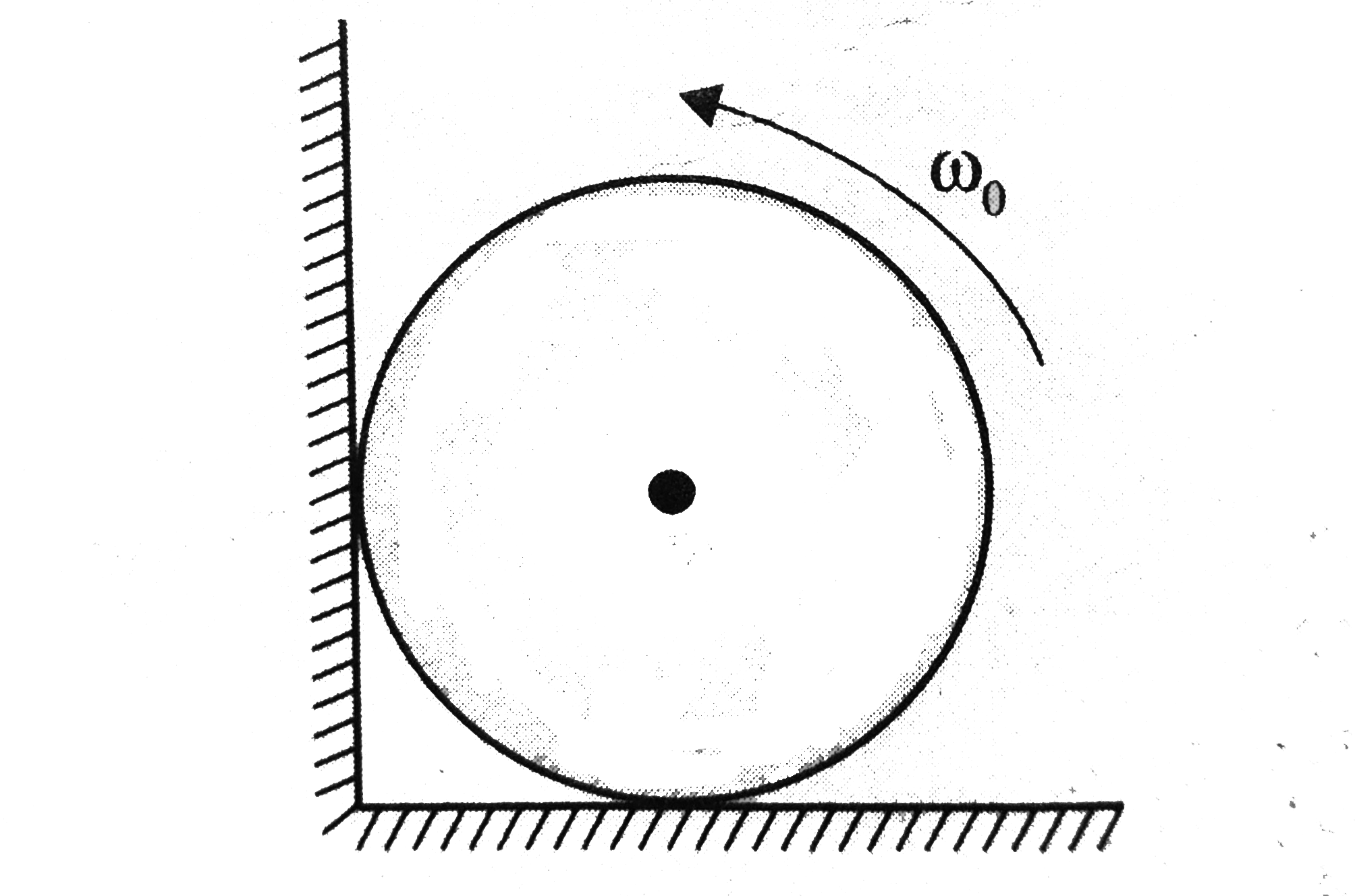A disc of radius R is rotating with an angular ω0 about a horizontal axis it is placed on a horizontal table . The coefficient of kinetic friction is μk
(a) what was the velocity of its centre of mass before being brought in contact with a the table ?
(B) what happens to the linear velocity of a point on its rim when placed in contact with the table ?
(c ) what happes to the linear speed of the centre of mass when disc is placed in contact with the table ?
(d) which force is responsible for the effects in (b) and (C ) ?
(e) wht condition should be sattisfied for rolling to begin ?
(f) Calculate the time taken for the rolling to begin .
(a) Before being Brought in contact with the the was in in pure rotational motion hence vCM=0

(b) when the disc is placed in contact with the table due to friction velocity of a point on the rim decreases ,
(c) when the rotating disc is placed in correct with the table due to friction centre of mass acquiries some linear velocity .
friction is responsible for the effects in (b) and ( c)
(e) when rolling starts vCM−ωR.

where ω is angular speed of the disc when rolling just starts.
(f) Acceleration produced in centre of mass due to friction
aCM=Fm=μkmgm=μkg.

Angular retardation produced by the torque due to fricton .
α=τI=μkmgRI [∵τ=(μkN)R=μkmgR]
∴vCM=uCM+aCMt
⇒VCM=μkgt(∵UCM=0)
andω=ω0+at
⇒ω=ω0−μkmgRIt
For rolling without sliping ,VCMR=ω
⇒VCMR=ω0−μkmgRIt
μkgtR=ω0−μkmgRIt
t=Rω0μkg(1+mR2I)
note in this problem , frictional force help in seting pure rolloing motion .
Topper's Solved these Questions
- SYSTEM OF PARTICLES AND ROTATIONAL MOTION BOOK - NCERT EXEMPLAR ENGLISHCHAPTER - SYSTEM OF PARTICLES AND ROTATIONAL MOTION EXERCISE - very short answer type questions
18 Videos
- OSCILLATIONSBOOK - NCERT EXEMPLAR ENGLISHCHAPTER - OSCILLATIONSEXERCISE - All Questions
36 Videos
- THERMAL PROPERTIES OF MATTERBOOK - NCERT EXEMPLAR ENGLISHCHAPTER - THERMAL PROPERTIES OF MATTEREXERCISE - Very short Answer type Questions
15 Videos
Similar Questions
A hoop of radius r mass m rotating with an angular velocity ω0 is placed on a rough horizontal surface. The initial velocity of the centre of the hoop is zero. What will be the velocity of the centre of the hoop when it cases to slip ?
View SolutionA ring of radius R is first rotated with an angular velocity ω and then carefully placed on a rough horizontal surface. The coefficient of friction between the surface and the ring is μ. Time after which its angular speed is reduced to half is
View Solution
Knowledge Check
A ring of radius R is rotating with an angular speed ω0 about a horizontal axis. It is placed on a rough horizontal table. The coefficient of kinetic friction is μk. The time after it starts rolling is.
AωoμkR2gBωog2μkRC2ωoRμkgDωoR2μkg
A disc of mass m and radius R rotating with angular speed ω0 is placed on a rough surface (co-officient of friction =μ). Then

View SolutionA disc of mass M and Radius R is rolling with an angular speed ω on the horizontal plane. The magnitude of angular momentum of the disc about origin is:
View Solution
A disc of radius R is spun to an angualr speed ω0 about its axis and then imparted a horizontal velocity of magnitude ω0R4. The coefficient of friction is μ. The sense of rotation and direction of linear velocity are shown in the figure. The disc will return to its initial position.
View SolutionA disc is given an initial angular velocity ω0 and placed on a rough horizontal surface as shown Fig. The quantities which will not depend on the coefficient of friction is/are

View SolutionA disc of mass 3 kg and radius 0.5 m is placed on a horizontal frictionless table. With the help of a cue we gives a horizontal impulse of 15 Ns to the disc at topmost point then velocity of centre of mass will be
View SolutionA gramophone record is revolving with an angular velocity ω. A coin is placed at a distance R from the centre of the record. The static coefficient of friction is μ. The coin will revolve with the record if
View SolutionA uniform cylinder of radius R is spinned about it axis to the angular velocity ω0 and then placed into a corner,. The coeficient of friction between the corner walls and the cylinder is μk How many turns will the cylinder accomplish before it stops?

View Solution